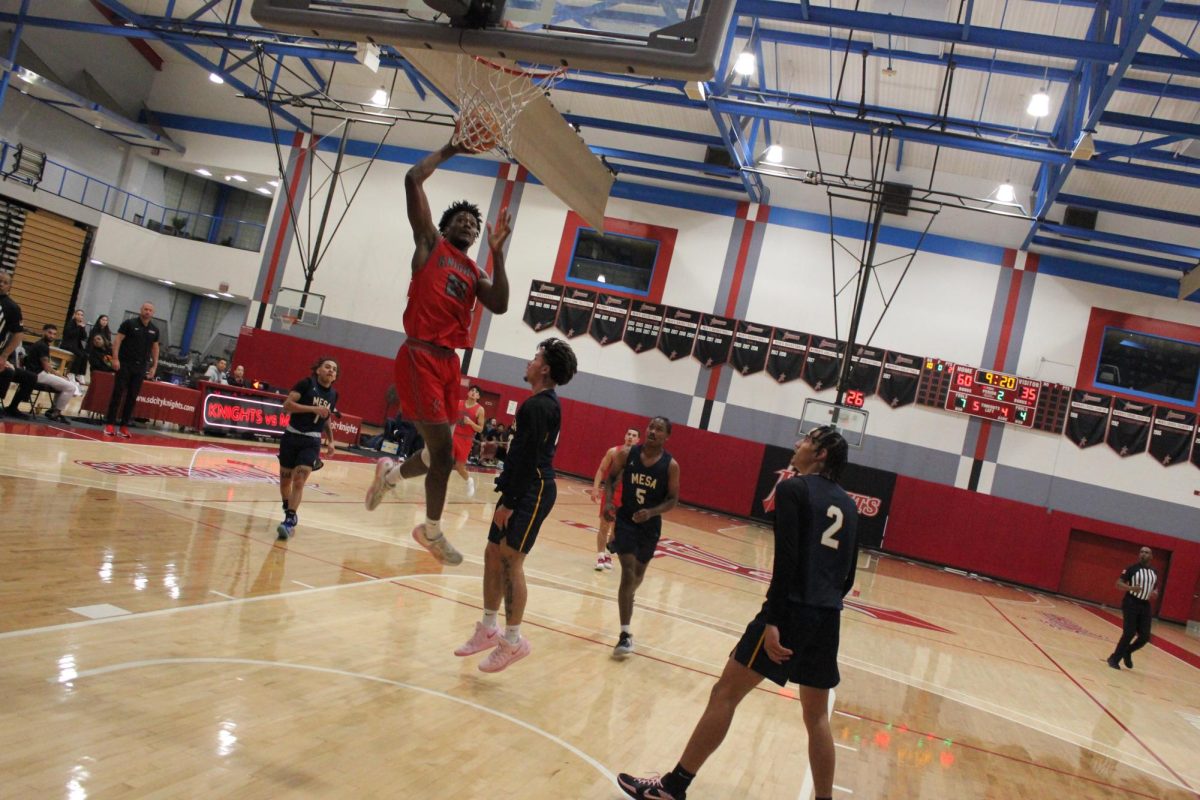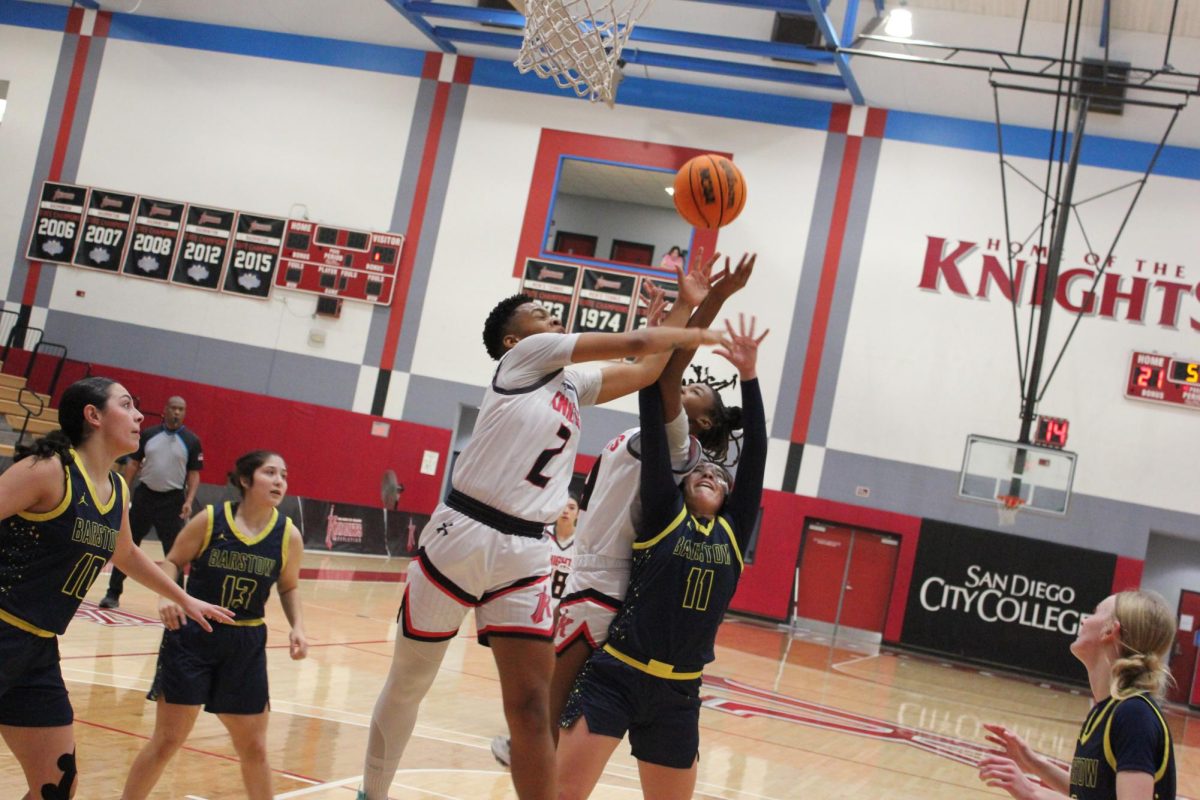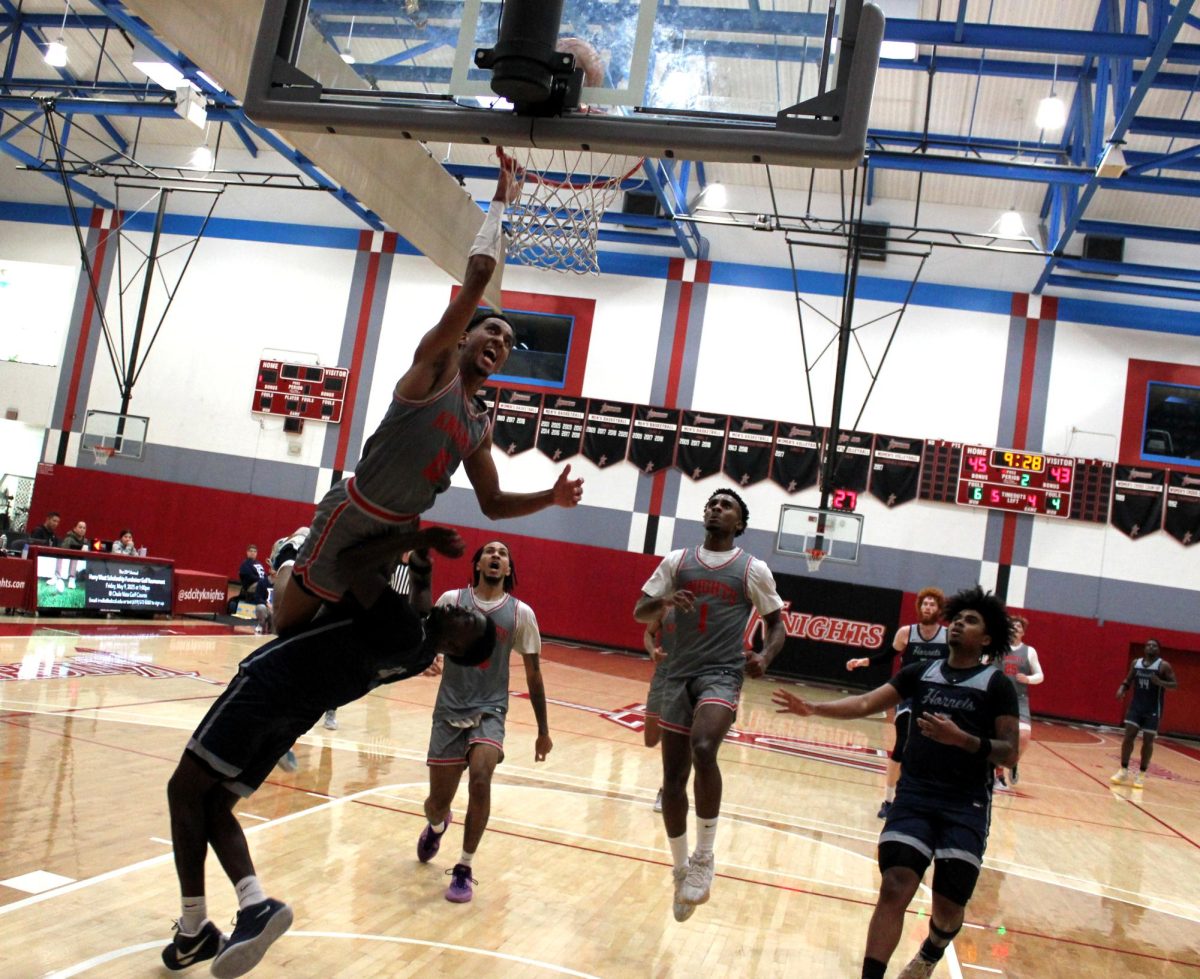Whether it is in an athletic or academic role, the primary concern is for the student’s safety.
With this in mind, San Diego City College has spent $12,000 on having the soccer field repaired, a small price to pay when you consider that the playing surface has been under tremendous strain for the past few years with all the activity that has taken place on it.
The previous semester the field was a cause of several injuries, mostly twisted ankles or knees.
The athletics department used to offer soccer as a class for beginners and intermediates. The field was in use every day for a number of hours, not including the fence jumpers out for a bit of weekend fun.
This year, because of the budget cuts, the field is only offered as an intercollegiate class. It is still is in use four hours a day, every day of the week.
The constant wear and tear left the field in an atrocious state, with major potholes, which hindered the flow of play.
On a number of occasions last year, with an open backfield and nothing but the goalkeeper to prevent scoring, the ball when put forward, would go flying in all directions.
The result of this has seen the school spend the money on having the playing surface laser-leveled and has had all the large holes filled in, and new sod lain in an area of over 60 yards in the middle of the field.
“It’s better than its been in the last couple of years,” said Coach Milton Hildago.
As Southern California is experiencing one of its worst droughts in years, and water restrictions have been implemented statewide the task of preparing the field is even more arduous. The banks and the area surrounding the field shall no longer be watered in an attempt to save money,.
The answer has come in the form of Calsense, an intriguing and intelligent piece of equipment that essentially has a water bucket on a pole and is connected to the internet, which in turn reads the weather and waters the field accordingly.
The grounds crew can fine tune Calsense to their desired specifications and correct the reading. Robert Lozares the grounds keeper said they “are watering it constantly and fertilizing the field every eight weeks”.







